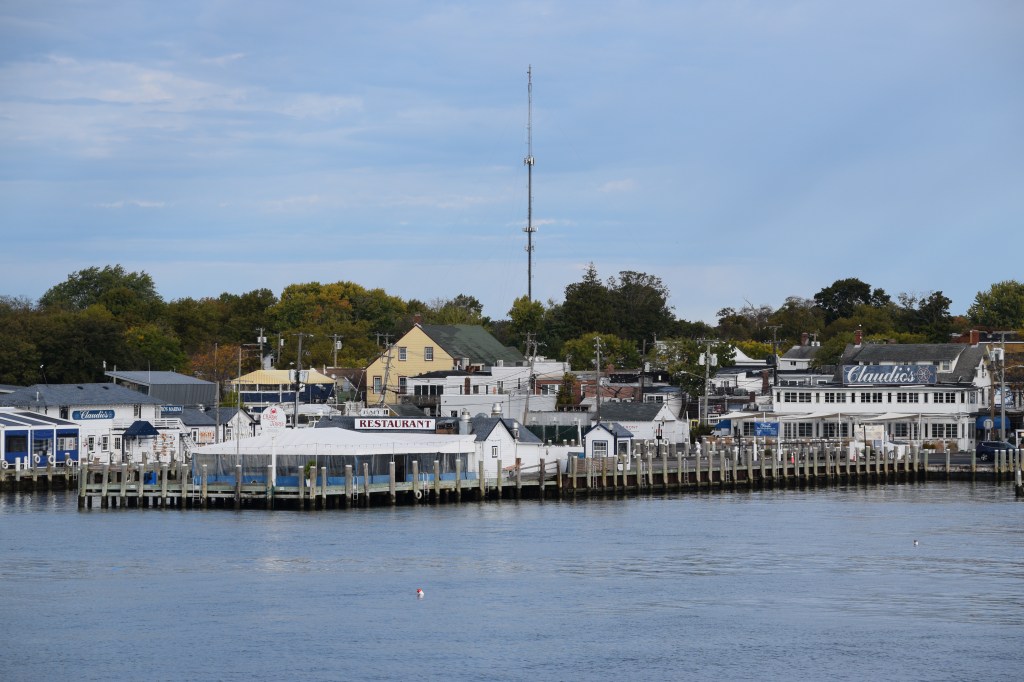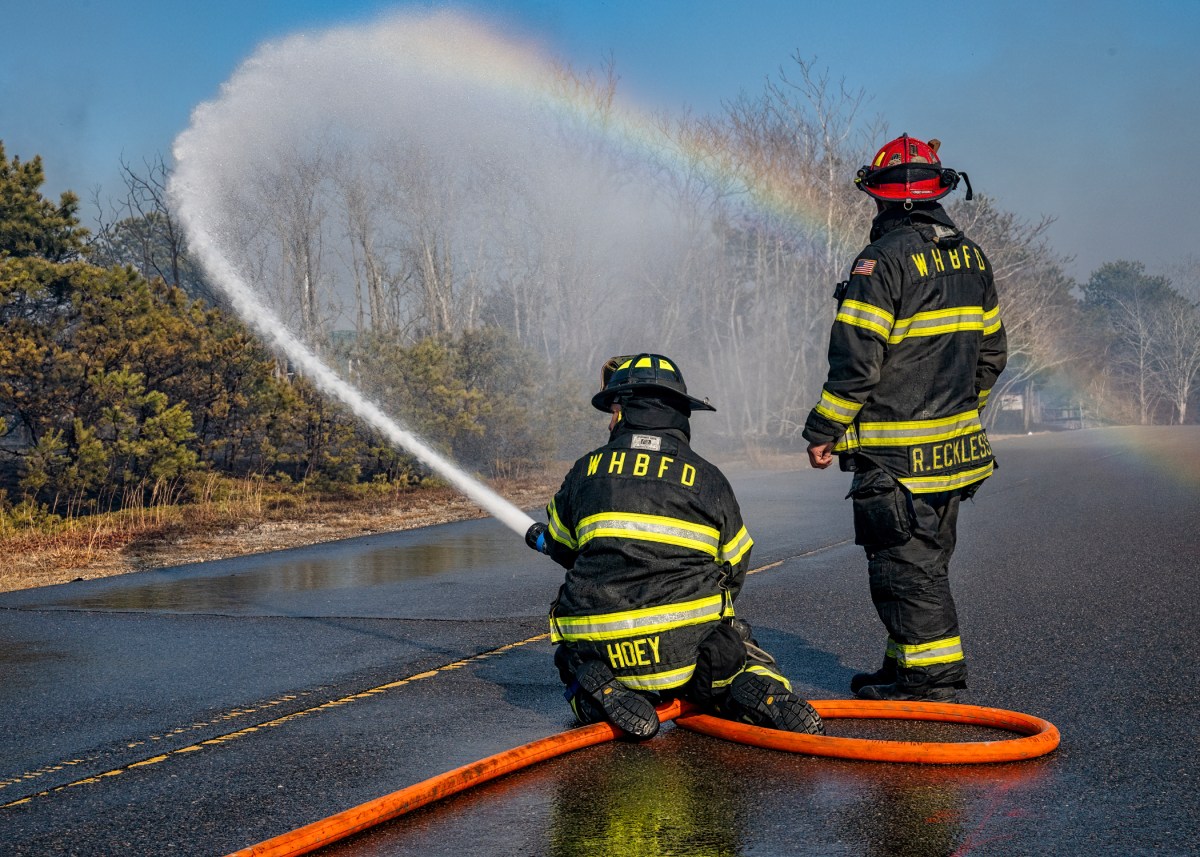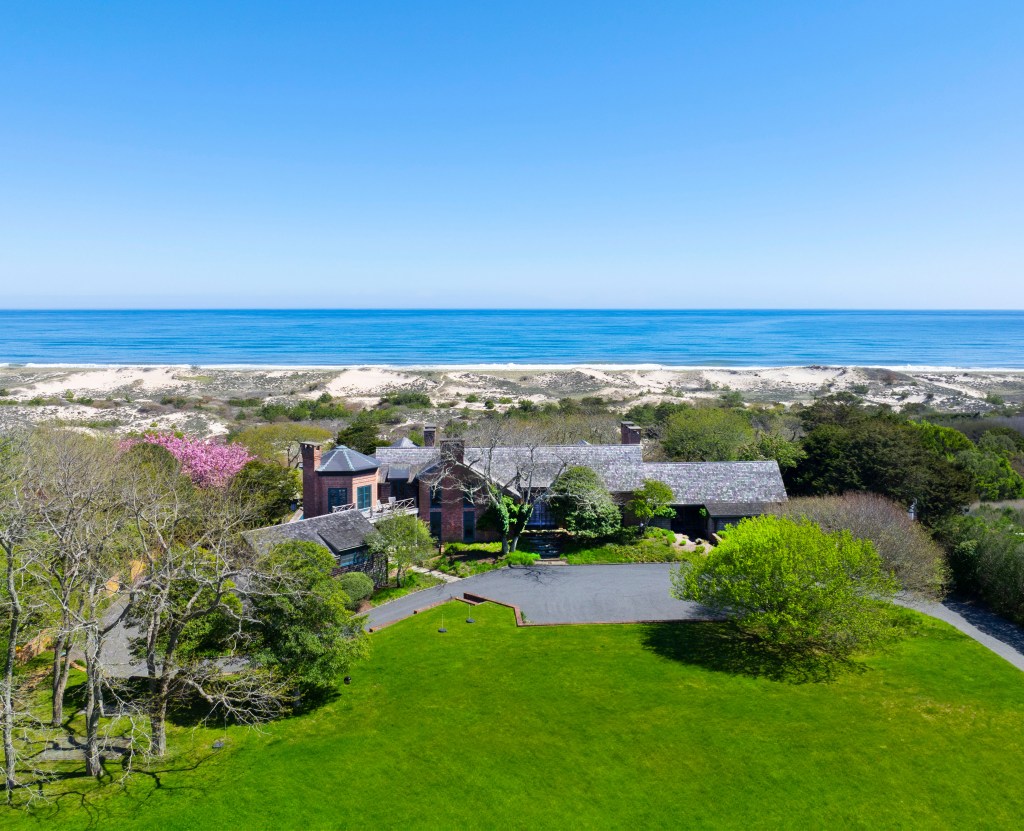Evan Brownstein Shows Chainsaw Sculpture at Duck Creek
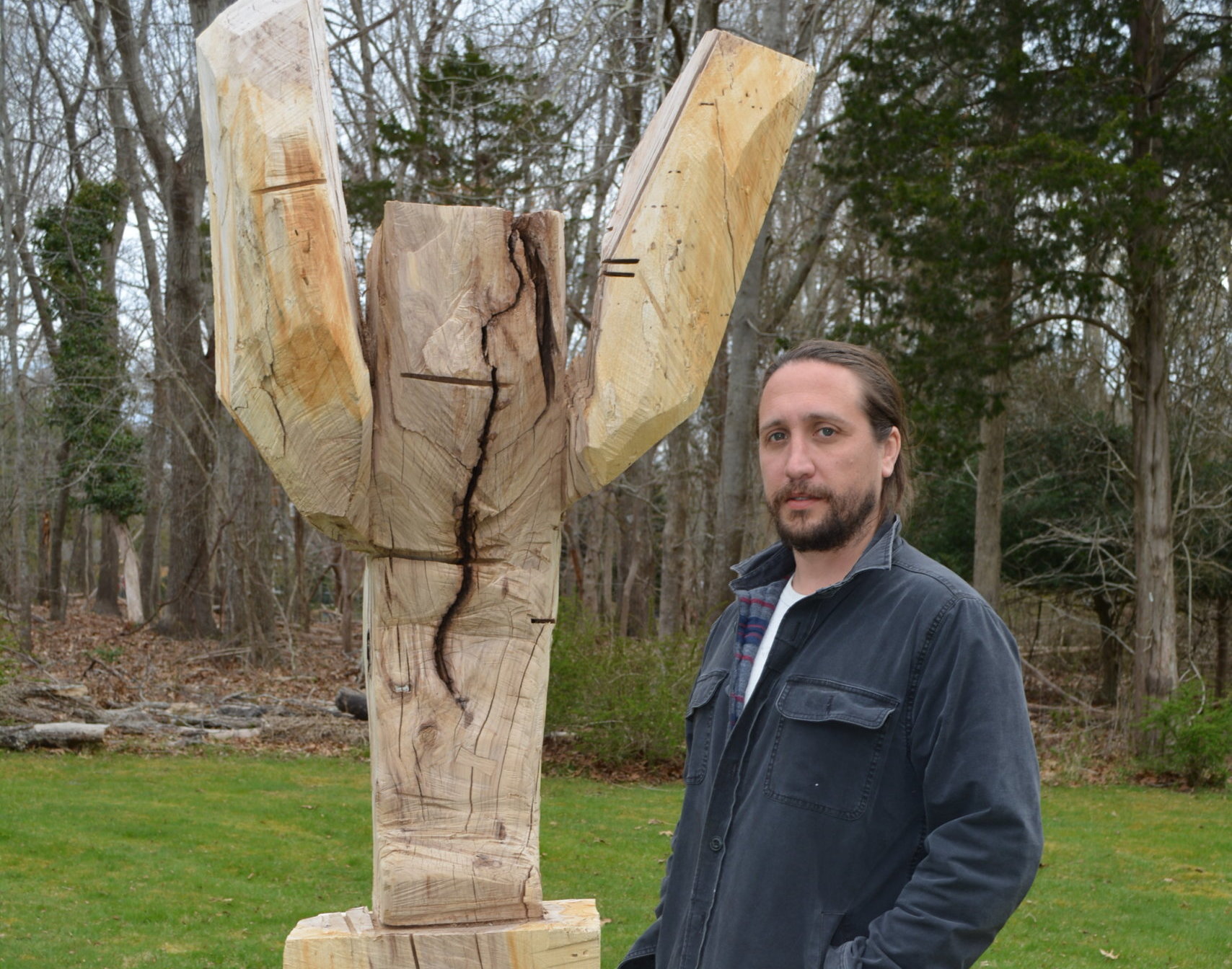
The Arts Center at Duck Creek in East Hampton debuted a new outdoor, site-specific collection of sculptures by Evan Brownstein last weekend and it offers something of a master class about how location, material and a particular moment in time can define a body of work.
On view through June 26, Hannah…Hector…Henry…Hermes… features a series of Brownstein’s wood sculpture, all created using a chainsaw and large trees on the grounds of Duck Creek and a neighboring property owned by local artist Mica Marder in Springs. The rough-hewn, gestural works channel the region’s deep connections with Abstract Expressionism, while also speaking to a very physical sense of place, as demonstrated by Brownstein’s energetic mark making and the decades-old, local oak, walnut and maple trees from which his pieces are formed.
A photographer who began working with wood using more traditional, refined techniques over the past eight years in Los Angeles, Brownstein started exploring the chainsaw by necessity after the pandemic hit.
“That’s a really important part of the show and part of the underlying theme,” he says, noting that he took to photography at 10 years old and continued until he tried making sculpture about a decade ago. “I was working in a wood shop and doing fine finished pieces…using fine furniture techniques,” Brownstein says, adding, “I was always tied to a facility (wood shop or darkroom) for my whole life, and if that facility was closed, I basically wasn’t working. So, when COVID hit L.A. and everything closed, I spent the first two weeks in my house like everybody else, trying to figure out what was going on. But when I got the bug to start working again, really the chainsaw was the only tool that was available to me, because all the facilities were closed.”
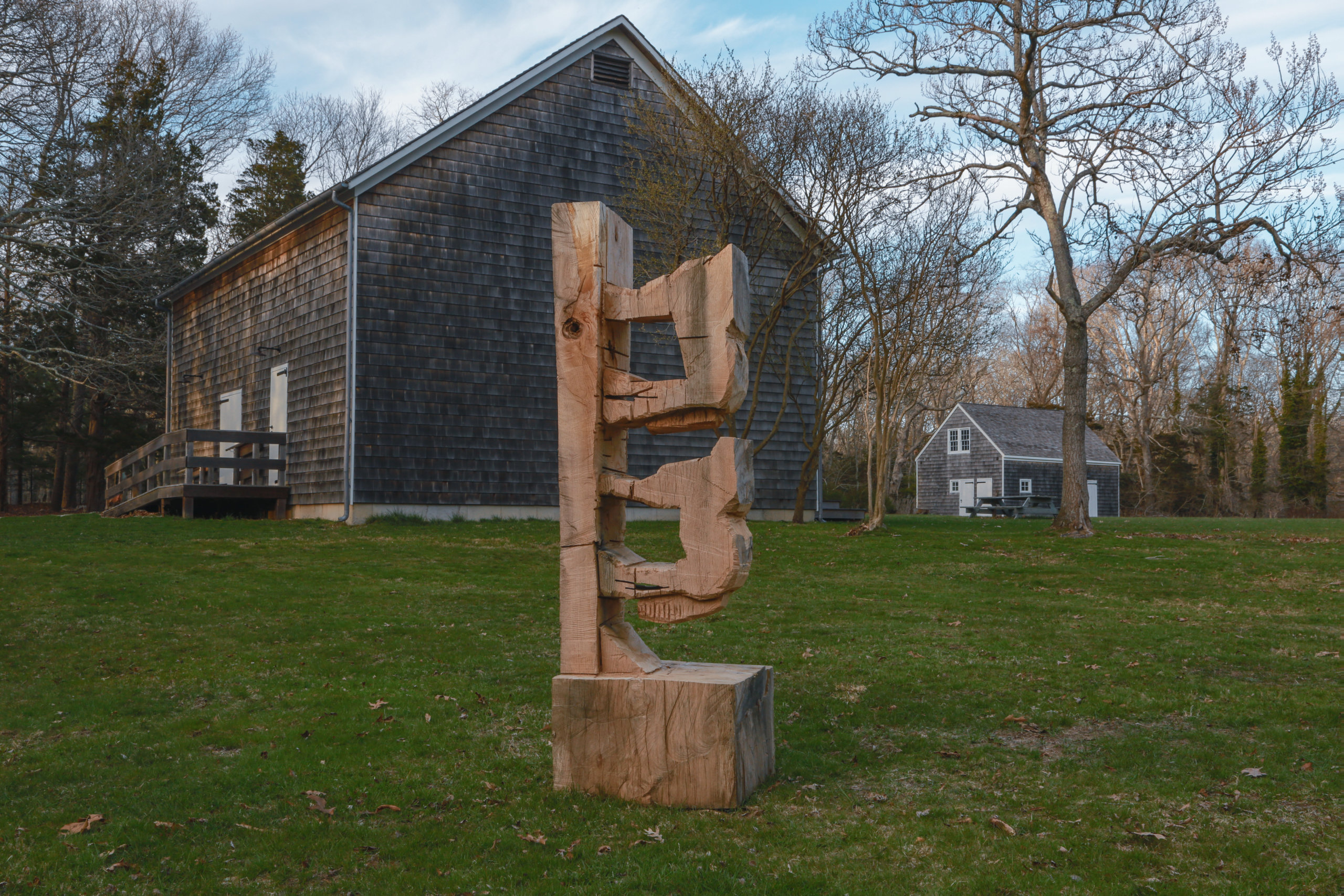
Before the pandemic led him to leave California and head to the Hamptons, where he spent summers while growing up in NYC, Brownstein was already well into honing his chainsaw skills. “I started bringing wood into this abandoned lot in Little Armenia in L.A., and I just started making sculpture with a chainsaw. Because of that, all of these marks I’m making on this material, it’s really tied to time and place in a way that feels pretty important to me, because the chainsaw entered my work as a result of circumstance,” he says.
“When COVID hit, I basically came here to get away from it,” he continues, pointing out that he arrived last winter and built a studio in the woods of Amagansett in order to continue the work he started during lockdown in L.A. By then, he’d grown to enjoy the chainsaw, both the act of using it and the results it produced.
“I’d always been jealous of painters who could set up wherever and just get to work, where I didn’t have that kind of freedom or luxury (with photography and fine woodworking). It felt super liberating to just be able to make work wherever I wanted, whenever I wanted,” Brownstein recalls, adding, “The chainsaw is also a really aggressive tool so there’s probably some kind of catharsis amid all of the shit that was going on, because of the physicality and how rugged the tool is.”
Soon, the artist had new works underway and he applied for a show at Duck Creek, but the community-oriented arts center declined his application because Brownstein had only been in town for a short time. This season, however, fate intervened in the form of a large, dead walnut tree East Hampton Town felled on the art center’s property. Executive Director Jess Frost remembered Brownstein used a chainsaw and she invited him to come “give it a second life.” Plans for his show soon followed.
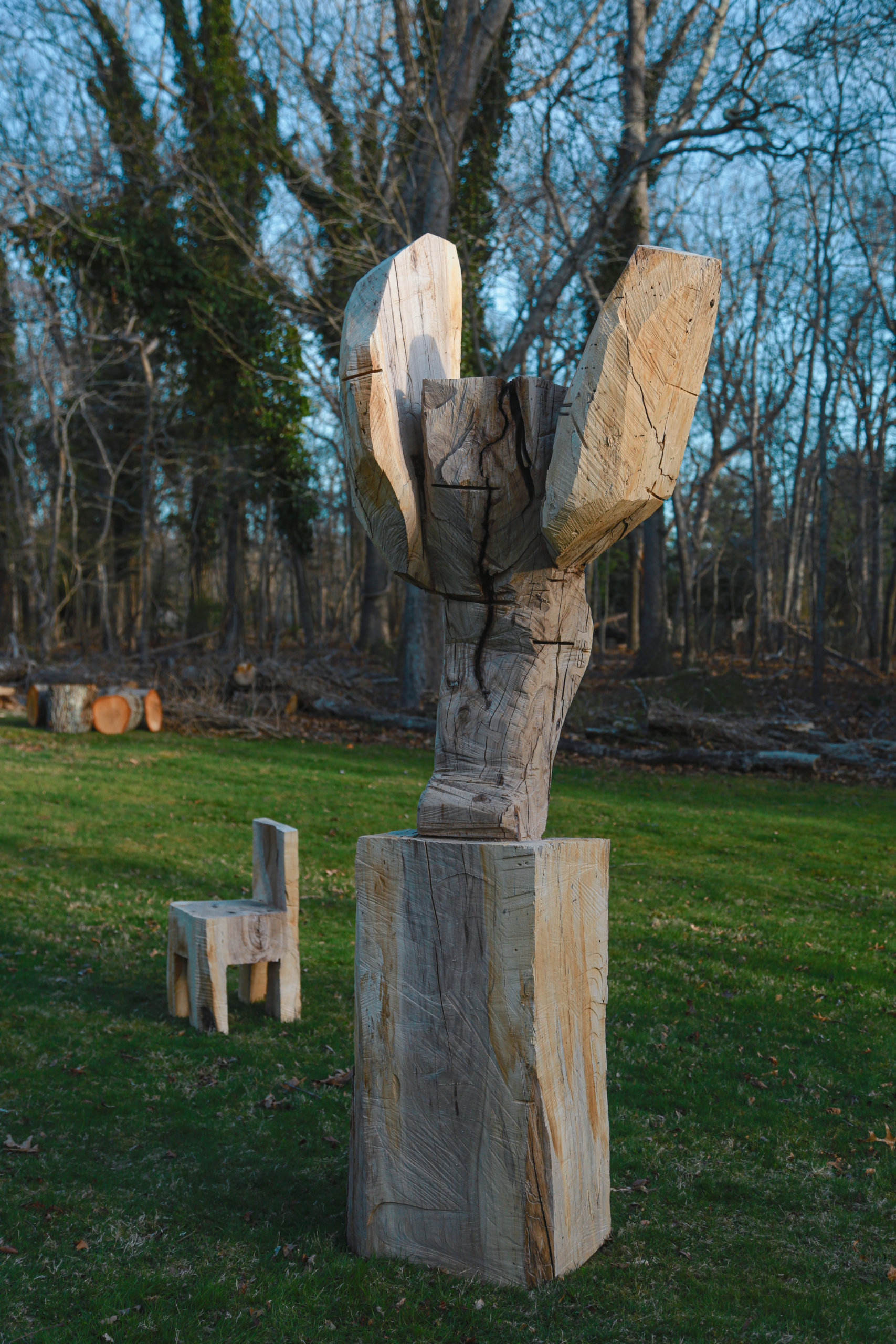
From that tree, Brownstein carved the first piece in the show, “Talaria,” a 7-foot sculpture based on the winged sandal of Hermes, messenger of the Greek gods. He was also able to make three carved chairs and a second sculpture, “Untitled (towards a more complete understanding of calm),” before moving on to different wood.
Each piece in Hannah…Hector…Henry…Hermes… beautifully demonstrates the chainsaw’s ability to make expressive strokes in the wood, layered with Brownstein’s deliberate gestures, the wood’s natural grain, imperfections from years of growth and the cracks and weathering (checks and silvering) that come with time outside in this specific place. The final product is a symphony of marks — purposeful, accidental and natural — and it couldn’t exist in quite the same way anywhere else in the world.
Brownstein says he smoothed, polished and sealed his early chainsaw pieces, which had their own arresting beauty, but he recognized the power of this rougher, raw-wood approach. “The finished pieces, when they’re shiny and smooth and waxed, they’re just so easily beautiful in an impressive way, like an ooh and ahh kind of way,” he acknowledges. “And it was hard for me to put that away. You get such satisfaction from the viewer when it’s all shiny and smooth, so it took some time for me to be like, OK, that’s not the only way to make this thing powerful and beautiful.”
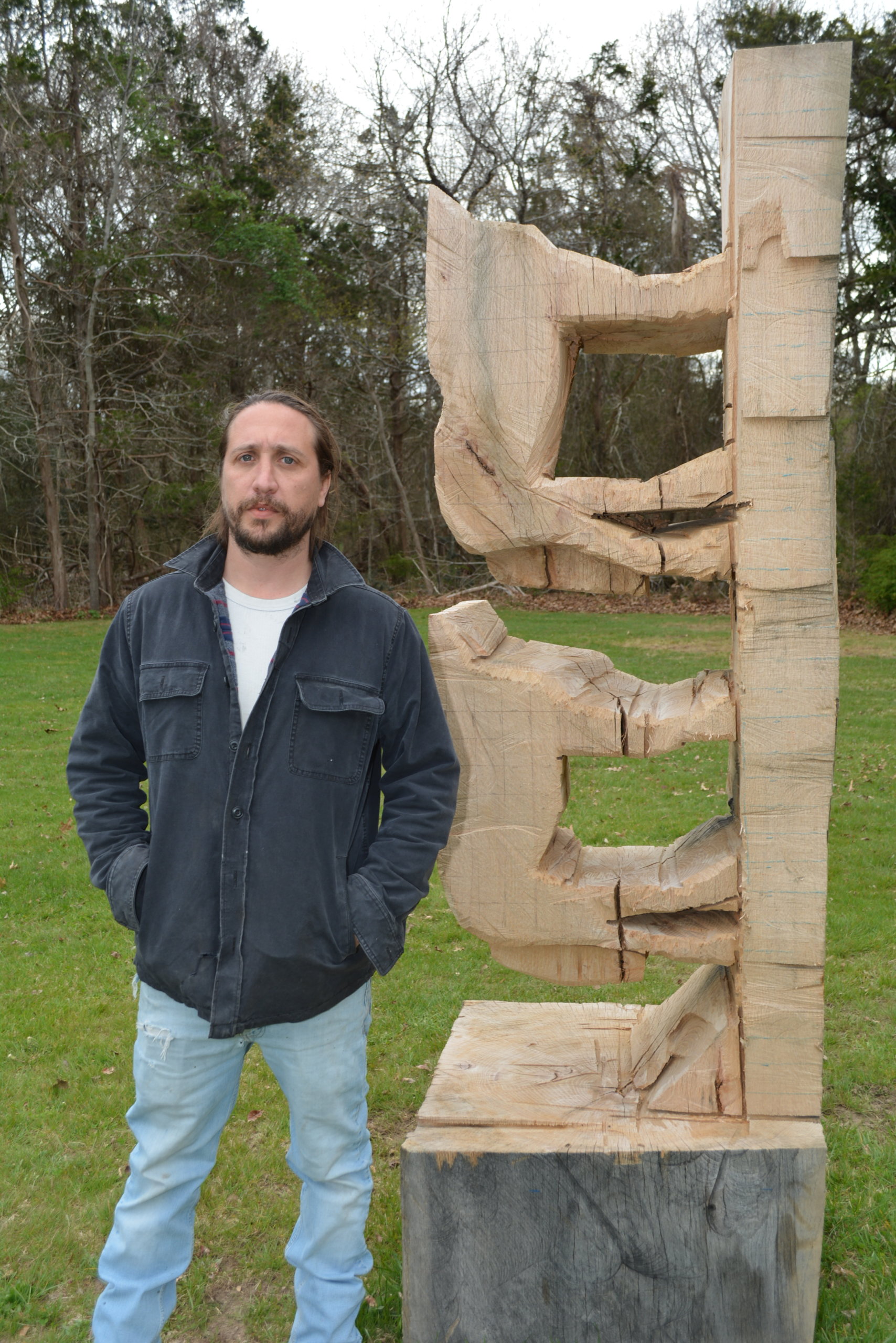
The sculptures at Duck Creek, Brownstein says, will continue to age and turn gray through the natural “silvering” process, like an old dock on Accabonac Harbor, adding, “Over the season, or two seasons, those will silver and finish themselves naturally.”
In other words, this work has just begun to evolve.
Hannah…Hector…Henry…Hermes… is on view now at The Arts Center at Duck Creek, 127 Squaw Road, Springs, East Hampton. Visit duckcreekarts.org for more info.

